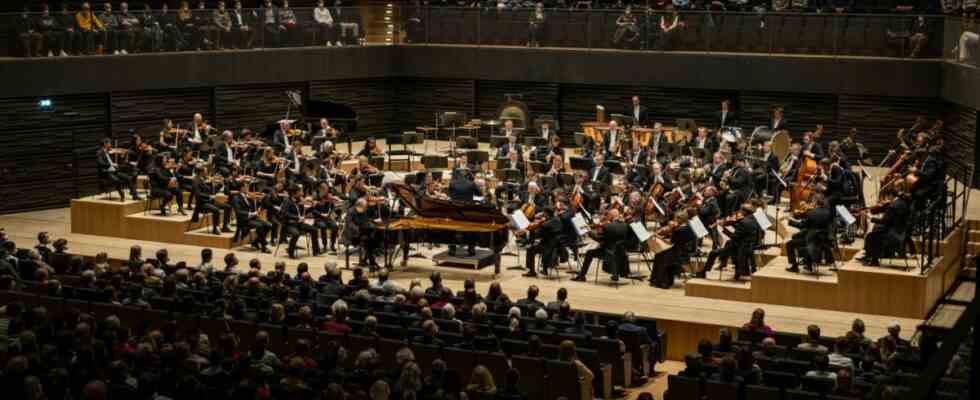Exciting, inspiring, profound, gripping – in short: this concert by the Munich Philharmonic in the Isarphilharmonie was a great success, conducted by Andris Nelsons, head of the Boston Symphony Orchestra and conductor of the Gewandhaus in Leipzig, with great attention to detail, and Yefim Bronfman by Sergei Rachmaninoff played a mighty 3rd piano concerto that not only pushed the pianist and the orchestra to the limits of exhaustion.
Bronfman developed the piece as a multifaceted novel, damming up the energies in front of the dramatic, massive piles up so that they could discharge eruptively, but also in a relaxing way. This approach to pianistic storytelling avoided any intrusiveness. Bronfman doesn’t need to show off with fat rubati or superimposed thunder. He focuses on Rachmaninoff’s melancholy, his longing for beauty and at the same time the knowledge of its inevitable loss, made possible by Bronfman’s creative virtuosity. Nelsons and the Philharmonic followed the pianistic novelist through the adventures of the three movements with great sensitivity and touching instrumental warmth. Bronfman thanked the applause with a demonstration of his dramatic power, with the frenzied finale of Beethoven’s “Appassionata”.
Andris Nelsons conducts with springy power and the lightest of hands
The secret of Nelson’s conducting is precisely this flow of warmth, which he is able to transmit wonderfully to the orchestra, coupled with springy power and never-ending care for the dynamic, rhythmic and tonal nuances of what is happening. This physically heavy conductor is able to span huge arcs of melody with wide-ranging arms, he knows how to seamlessly transition the process from one group to another and to stage the punchlines, the elfin dancing or malicious stabbing in Sergei Prokofiev’s 5th symphony with the lightest of hands. How in the first movement softness turns into crunching fortissimo horror and then can transform back exhausted, how in the scherzo lightness can turn into martial sharpness, how adagio intimacy, grandiosely unfolded by Nelson and the Philharmoniker, rises to a menacing wall of chords, and how the final allegro giocoso exploded in a thunderstorm of percussion – Nelsons and the Philharmoniker, who rightly celebrated and were celebrated one another, have memorably told Prokofiev’s symphony in all its contradictions.

